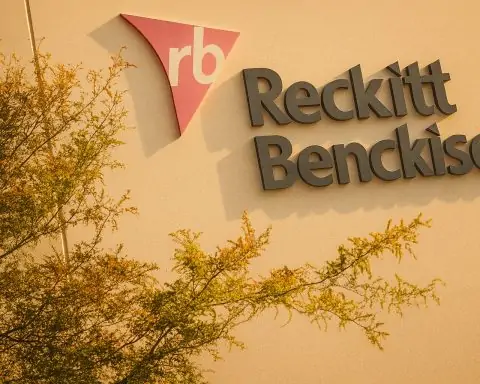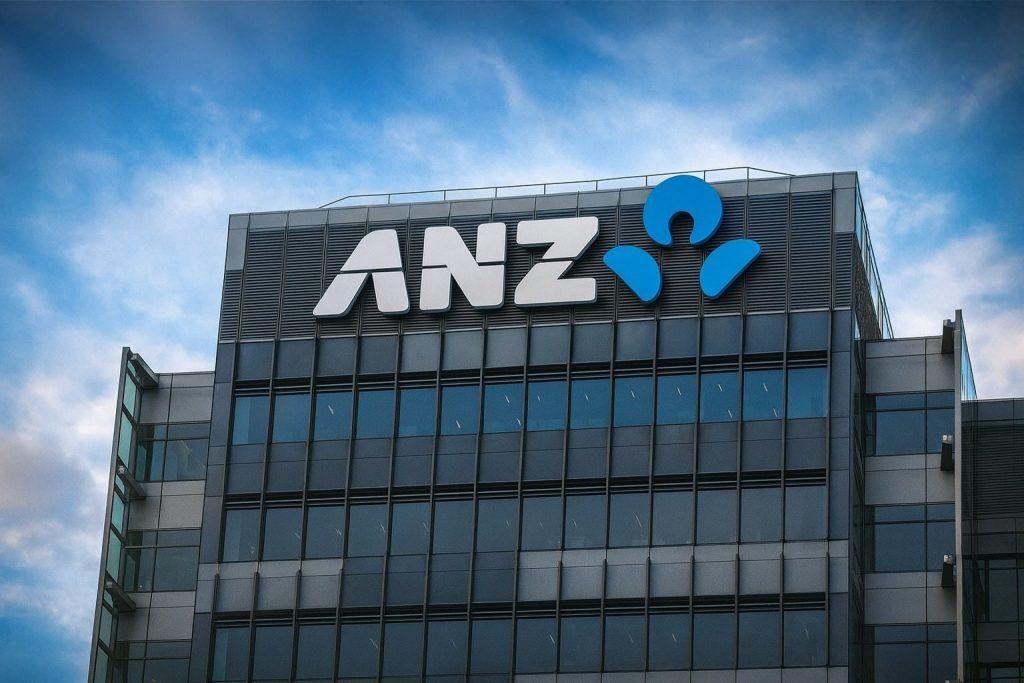As the ASX prepares to open on Monday, 24 November 2025, Macquarie Group Ltd (ASX: MQG) will be one of the most closely watched financial stocks on the market. After a disappointing half‑year earnings miss, a fresh interim dividend, an extended buyback and a flurry of regulatory and strategic headlines, investors have a lot to digest before the next trading session.
All data below is current as of the ASX close on Friday, 21 November 2025, unless otherwise stated.
Key takeaways for Macquarie shares before Monday’s open
- Share price: Macquarie closed at A$194.09 on Friday, 21 November, down 0.22% on the day and roughly 12% lower year‑to‑date in 2025, underperforming the broader ASX 200. [1]
- Earnings: 1H26 net profit came in at A$1.655 billion, up 3% year‑on‑year but around 11% below analyst expectations of about A$1.86 billion, with weakness in commodities offsetting stronger asset management and banking results. [2]
- Dividend & buyback: Macquarie has declared a A$2.80 interim dividend (35% franked) with payment due 17 December 2025, and has extended its up to A$2 billion on‑market buyback, with A$1.013 billion already spent at an average price of A$189.80 per share. [3]
- Valuation: At around A$194, the stock trades on roughly 20× FY25 earnings and a forward dividend yield in the low‑to‑mid 3% range based on A$6.50 per share in FY25 dividends. [4]
- Risk backdrop: Macquarie is navigating ongoing ASIC actions, a A$321 million compensation program for super investors in the collapsed Shield Master Fund, shareholder push‑back on executive pay and climate concerns, alongside headwinds in its commodities and green investment franchises. [5]
- Macro & housing credit: The RBA has left the cash rate on hold at 3.60% amid sticky inflation, and Macquarie has joined peers in pulling back from riskier trust‑based property lending, a sign of tightening credit standards in Australia’s hot housing market. [6]
- Analyst stance: Some brokers still model FY26 profit near A$4.2 billion and see upside, while one widely cited fair‑value/target cluster around A$224–225 per share, implying mid‑teens percentage upside from current levels – but with wide disagreement around regulatory and earnings risks. [7]
Let’s break down what all of this means ahead of Monday’s session.
1. Share price snapshot: Macquarie is in a correction of its own
Macquarie Group finished Friday at A$194.09, with an intraday range between A$187.74 and A$194.49. That’s well below its 52‑week high of A$242.90 and only modestly above the A$160 low over the same period. [8]
Performance has clearly softened in 2025:
- Year‑to‑date (2025): Down about 11–13%, depending on the measure used. [9]
- FY26 to date (since 1 April 2025): Roughly 15% lower, reflecting the post‑result sell‑off. [10]
By contrast, the S&P/ASX 200 index is down about 5.4% for November but still positive (~3%) year‑to‑date, meaning Macquarie has underperformed both the broader market and the financials sector over the last 12 months. [11]
The stock’s recent slide has been driven largely by:
- The earnings miss versus expectations.
- Concerns about the commodities and green‑energy businesses.
- Growing regulatory and governance noise around the group.
For investors watching the open on 24 November, A$190–200 has emerged as the new near‑term battleground after the stock fell from above A$220 late in October. [12]
2. 1H26 results: modest growth, but below the market’s bar
Macquarie’s half‑year to 30 September 2025 (1H26) showed that the group is still growing – just not as quickly as analysts had hoped.
Headline numbers from the ASX/Media release: [13]
- Net profit after tax: A$1,655 million
- +3% vs 1H25
- –21% vs 2H25
- Net operating income: A$8,691 million
- +6% vs 1H25
- –3% vs 2H25
- Operating expenses: A$6,239 million
- +5% year‑on‑year, flat vs 2H25
- Annualised ROE: 9.6%, down from 11.2% in FY25. [14]
- Assets under management (AUM): A$959.1 billion, up 5% year‑on‑year and 2% since March. [15]
The segment breakdown underscores how diversified Macquarie’s earnings machine is: [16]
- Macquarie Asset Management (MAM):
- Net profit contribution A$1,175m, up 43% on 1H25, powered by higher performance fees and strong valuations (including data‑centre assets such as AirTrunk and Aligned).
- Banking & Financial Services (BFS):
- Profit A$793m, up 22%, thanks to mortgage and deposit growth and a lower average headcount, partly offset by margin compression and higher tech spend.
- Commodities & Global Markets (CGM):
- Profit A$1,113m, down 15%, as subdued market volatility, higher platform and remediation costs and weaker trading income hit earnings.
- Macquarie Capital:
- Profit A$711m, up 92%, reflecting a rebound in M&A and brokerage fee income and growth in the private credit portfolio.
From a top‑down perspective, annuity‑style businesses (MAM + BFS) did the heavy lifting, while the markets‑facing CGM franchise – once Macquarie’s key profit engine – stumbled. That matters because CGM still accounts for roughly a quarter to a third of group profits, and its earnings are more cyclical. [17]
3. Earnings miss and market reaction: why the stock sold off
Despite the headline profit growth, the market focused on the miss versus expectations:
- Consensus forecasts had pointed to around A$1.86 billion in 1H26 profit.
- The actual result of A$1.655 billion was roughly 11% below that. [18]
Coverage from Reuters, the Financial Times and local media highlighted three key issues: [19]
- Commodities slowdown:
Earnings from Commodities & Global Markets fell around 15% year‑on‑year as lower trading volatility, particularly in North American gas and power, reduced opportunities, while costs rose. - Green asset impairment:
Macquarie booked a A$152 million impairment on offshore wind and other renewable assets amid rising capital costs and deployment delays, hitting the green investments book that has been a core part of its energy‑transition story. - Share price response:
On the day of the result (7 November), Macquarie shares fell about 5–7% in heavy volume, dragging the ASX lower. The stock has continued to drift down since, as investors digest both the miss and the broader market correction.
Taken together, the result reinforced the narrative that Macquarie’s diversified model is cushioning, but not fully offsetting, weakness in more cyclical businesses.
4. Dividend, DRP and buyback: capital returns remain a support
For income‑oriented investors, the most important piece of the 1H26 puzzle may be the combination of dividends and buybacks.
Interim dividend
Macquarie declared an interim ordinary dividend of A$2.80 per share, 35% franked: [20]
- Ex‑dividend date: 17 November 2025
- Record date: 18 November 2025
- Payment date: 17 December 2025
- Payout ratio: 64% of 1H26 earnings, consistent with the group’s 50–70% payout policy.
FY25’s total dividend was A$6.50 per share, and at around A$194 that equates to a trailing dividend yield of roughly 3.3–3.5% (before franking benefits). [21]
Dividend Reinvestment Plan (DRP)
Macquarie is sourcing DRP shares on‑market, rather than issuing new stock, and has set the DRP pricing period from 24 November to 3 December 2025. [22]
That means:
- From Monday’s session onward, Macquarie (or its broker) is likely to be a consistent buyer of its own sharesover the 7‑trading‑day period to fund DRP allocations.
- This DRP buying sits on top of the existing buyback, adding another layer of potential demand in the A$190–200 price zone.
On‑market buyback and capital strength
Macquarie’s capital position remains robust even after significant shareholder returns: [23]
- Group capital surplus: A$7.6 billion (vs A$9.5 billion at 31 March 2025).
- CET1 ratio (Bank Group): 12.4% (harmonised 17.3%), comfortably above APRA requirements.
- Liquidity metrics: LCR 173%, NSFR 113%.
- Deposits: Up 12% since March to A$198.8 billion.
Against that backdrop, the board has extended its up to A$2 billion on‑market buyback for another 12 months, with A$1,013 million already spent at an average price of A$189.80 per share as of 6 November. [24]
For long‑term holders, this combination of a solid, partially franked dividend stream plus ongoing buybacks is a key part of the investment case – but it’s only as compelling as the underlying earnings trajectory and regulatory backdrop.
5. Regulatory, legal and governance overhangs
One reason investors are demanding a discount for Macquarie today is the stack of regulatory and governance issuesthat have emerged over the past 18 months.
ASIC short‑selling case and compliance track record
In May 2025, ASIC sued a Macquarie securities unit for allegedly misreporting up to A$1.5 billion in short sales over 15 years, on top of earlier actions that included a record A$4.995 million Markets Disciplinary Panel fine for failures in Australia’s electricity futures market. [25]
Regulators have also imposed additional licence conditions on Macquarie Bank relating to more than a decade of compliance failures. [26]
This has fed into shareholder discontent:
- At the July 2025 AGM, 25.4% of shareholders voted against the remuneration report, handing Macquarie its first “strike” under Australian rules and forcing a review of executive pay. [27]
- The company’s long‑serving CFO, Alex Harvey, is stepping down at the end of 2025, to be replaced by deputy CFO Frank Kwok, adding to perceptions of change at the top. [28]
Shield Master Fund and superannuation governance
Regulatory scrutiny intensified further with the Shield Master Fund scandal:
- In September 2025, a Macquarie superannuation unit agreed to repay A$321 million to around 3,000 customerswhose retirement savings were invested in the now‑collapsed Shield Master Fund via Macquarie’s platform. [29]
- ASIC alleged the group failed to act “efficiently, honestly and fairly” by not placing Shield on heightened monitoring despite red flags, and launched Federal Court proceedings. [30]
- ASIC has since noted that a case‑management hearing scheduled for 21 November 2025 was vacated, with the matter to be listed for hearing on a later date. [31]
Separately, Macquarie and Netwealth have cut ties with InterPrac Financial Planning in the wake of a A$1 billion superannuation scandal involving other funds, as Macquarie seeks to reduce risk across its distribution platforms. [32]
Climate and social licence issues
Macquarie has also attracted attention on the climate front:
- It became the first Australian bank to exit the UN‑backed Net Zero Banking Alliance, opting for its own transition framework at a time when its gas and infrastructure investments are under scrutiny. [33]
- Activist groups report that Macquarie recently received the largest “against” vote on climate at an Australian bank in history, as some institutional investors question the pace and transparency of its decarbonisation plans. [34]
For Monday’s open, none of these issues are “new news”, but they shape the risk premium investors are willing to pay for MQG shares and help explain why the stock trades at a discount to its historic multiples.
6. Strategy shifts: from US debt capital markets to private credit and green reshaping
Despite the noise, Macquarie is not standing still strategically.
Refocusing in capital markets and private credit
Earlier in 2025, reports indicated Macquarie would wind down its U.S. debt capital markets arm, reallocating capital and people into private credit and other higher‑return areas where it sees more sustainable margins. [35]
Within Macquarie Capital, the latest half‑year result showed:
- A near doubling of profit on the back of stronger M&A and brokerage activity. [36]
This is consistent with Macquarie’s longer‑term strategy of being more balance‑sheet‑light in public markets and more focused on advisory, private markets and infrastructure‑style exposures.
Green investments and offshore wind headwinds
Macquarie remains one of the world’s largest infrastructure and energy transition investors, but the economics of certain green assets have turned tougher:
- The group recorded a A$152 million writedown on renewable assets, especially offshore wind projects in the U.S., reflecting higher capital costs and slower deployment. [37]
- As of 1 September 2025, on‑balance‑sheet Green Investments were transferred into a centrally managed corporate portfolio, and industry reports suggest Macquarie is exploring partial stake sales in platforms such as Corio and Cero as it recycles capital. [38]
- A recent report also flagged that Macquarie is considering a sale of a controlling stake in British IT and communications firm Wavenet, again consistent with ongoing asset recycling. [39]
At the same time, Macquarie continues to host major events like its Energy Transition & Commodities Conference 2025 in Singapore, and has added senior hires in securities financing and structured products, underlining its intent to stay deeply involved in the energy transition and markets infrastructure, even as it tweaks its portfolio. [40]
7. Macro backdrop: rates on hold, housing heat and a shaky ASX
Macquarie operates at the heart of the financial system, so the macro environment going into Monday’s session matters.
RBA: restrictive, but stable for now
At its November 2025 meeting, the Reserve Bank of Australia held the cash rate at 3.60%, where it has been since August, citing persistent inflation pressures and robust demand. [41]
Key points:
- Underlying inflation is hovering around the top of the RBA’s 2–3% target band, and the Bank is cautious about signalling further cuts. [42]
- Economists largely now see Australia as being near the bottom of the rate cycle, not on the verge of aggressive easing.
For Macquarie, this mix supports:
- Solid net interest income in its retail bank (BFS), but
- Pressure on borrowers and increased regulatory focus on riskier lending segments.
Housing credit and trust lending crackdown
In fresh news for Monday morning, Capital Brief reports that Commonwealth Bank has joined Macquarie in pulling back from lending to property investors using trusts and company structures – vehicles that had been promoted on social media as a way to dramatically boost borrowing capacity. [43]
Macquarie had already stopped lending to investors using those structures, citing “animal spirits” in the housing market and concerns about unsustainable leverage. [44]
That move:
- Supports Macquarie’s risk credentials in the eyes of regulators (APRA and ASIC), but
- Could moderate mortgage growth at the margin if a meaningful share of new demand was coming via higher‑risk structures.
Equity market tone
The broader market tone is fragile:
- The ASX 200 has fallen about 2.5% over the past week and is tracking its worst month since late 2022, with roughly A$60 billion wiped from the index as global risk appetite has wobbled. [45]
For Macquarie, which earns significant fee income from markets, corporate activity and asset prices, a choppier, risk‑off environment is a mixed bag: good for volatility in some trading books, but negative for IPOs, M&A and capital‑raising pipelines.
8. Analyst views, valuation and sentiment going into 24 November
Despite recent volatility, many analysts still see upside in MQG over a multi‑year horizon – but there’s a lot less unanimity than in past cycles.
Price targets and “fair value” estimates
Data compiled by platforms such as Moomoo and Simply Wall St show: [46]
- An average 12‑month share‑price target / fair‑value estimate around A$224–225,
- Compared with Friday’s close at A$194.09.
That implies roughly 16% upside if those models are correct. Using A$224.48 as a reference, the upside from A$194.09 is about 15.7%.
However:
- Community and analyst fair‑value estimates span a wide range, from the A$150s up to the mid‑A$220s. [47]
- Local institutional coverage, including analysis cited in the Australian Financial Review, still sees the potential for full‑year FY26 profit near A$4.2 billion if the second half is strong, but flags downside risks from regulation, offshore wind impairments and commodities volatility. [48]
In short: there is no consensus that Macquarie is “cheap”, but many investors believe the current multiple already reflects a sizeable risk discount.
Current valuation snapshot
At around A$194, Macquarie trades at: [49]
- ~20× FY25 earnings per share (A$9.79).
- A trailing dividend yield of ~3.4%, plus franking.
- DPS over the last 12 months of A$6.70, according to Market Index. [50]
Compared to:
- The stock’s own history (often mid‑teens P/E in more benign periods), the current multiple looks elevated but not extreme, especially given lower ROE (9.6% vs 11.2% FY25). [51]
- Global peers in infrastructure and alternative asset management, it’s broadly in line once you adjust for franking and capital intensity.
9. What to watch on Monday for Macquarie shares
With the backdrop set, here are the practical things traders and longer‑term investors may focus on as the ASX opens on 24 November 2025:
- DRP and buyback flows
- Monday marks the start of the DRP pricing period, during which Macquarie will be buying shares on‑market to satisfy reinvested dividends. This, combined with the ongoing buyback, could provide a technical floor under the stock if broader market conditions are not too weak. [52]
- Follow‑through from housing credit headlines
- The fresh coverage of Macquarie’s trust‑lending pullback may prompt investors to re‑assess BFS growth versus its risk posture. Watch commentary and broker notes for changes in mortgage growth or margin assumptions. [53]
- Sentiment around green investments and commodities
- Any new commentary about offshore wind disposals, green writedowns or the energy transition conference could swing sentiment on CGM and the green portfolio, which remain key swing factors for earnings estimates. [54]
- Regulatory newsflow
- Although the Shield case hearing has been delayed, investors will remain sensitive to any update from ASIC, APRA or overseas regulators given Macquarie’s busy enforcement docket. [55]
- Global risk tone overnight
- With the ASX already in a multi‑week pullback and volatility elevated, moves in U.S. and European markets could amplify or dampen any stock‑specific reaction in MQG at the open. [56]
Bottom line
Heading into the 24 November 2025 open, Macquarie Group is a high‑quality franchise in a messy moment:
- Its core strengths – global infrastructure and energy transition investing, a growing Australian retail bank and a deep advisory and markets platform – are intact. [57]
- The latest half‑year result showed solid, if unspectacular, growth, with annuity businesses partly offsetting cyclical weakness. [58]
- Capital returns via dividends, DRP buying and a large on‑market buyback are meaningful supports at current prices. [59]
But the stock is trading under the shadow of:
- Regulatory and legal actions,
- Governance and climate‑related scrutiny, and
- Earnings volatility in commodities and green investments.
For investors and traders alike, the key question for Monday’s open – and beyond – is whether the current valuation adequately compensates for these risks while still reflecting Macquarie’s long‑term growth opportunities in infrastructure, private markets and energy transition.
As always, this article is general information only and not personal financial advice. Anyone considering MQG or related securities should assess their own objectives, risk tolerance and financial situation, and consider seeking advice from a licensed financial adviser.
References
1. www.macquarie.com, 2. announcements.asx.com.au, 3. announcements.asx.com.au, 4. www.macquarie.com, 5. www.reuters.com, 6. www.abc.net.au, 7. www.afr.com, 8. www.macquarie.com, 9. www.marketindex.com.au, 10. www.intelligentinvestor.com.au, 11. fnarena.com, 12. www.intelligentinvestor.com.au, 13. announcements.asx.com.au, 14. www.macquarie.com, 15. announcements.asx.com.au, 16. announcements.asx.com.au, 17. www.macquarie.com, 18. www.reuters.com, 19. www.reuters.com, 20. announcements.asx.com.au, 21. www.macquarie.com, 22. announcements.asx.com.au, 23. announcements.asx.com.au, 24. announcements.asx.com.au, 25. www.asic.gov.au, 26. www.asic.gov.au, 27. www.reuters.com, 28. www.reuters.com, 29. www.reuters.com, 30. www.reuters.com, 31. www.asic.gov.au, 32. www.theaustralian.com.au, 33. www.theaustralian.com.au, 34. www.facebook.com, 35. www.reuters.com, 36. announcements.asx.com.au, 37. www.ft.com, 38. www.macquarie.com, 39. www.akm.ru, 40. simplywall.st, 41. www.abc.net.au, 42. www.commbank.com.au, 43. www.capitalbrief.com, 44. www.capitalbrief.com, 45. fnarena.com, 46. www.moomoo.com, 47. simplywall.st, 48. www.afr.com, 49. www.macquarie.com, 50. www.marketindex.com.au, 51. announcements.asx.com.au, 52. announcements.asx.com.au, 53. www.capitalbrief.com, 54. www.ft.com, 55. www.asic.gov.au, 56. fnarena.com, 57. www.macquarie.com, 58. announcements.asx.com.au, 59. announcements.asx.com.au







